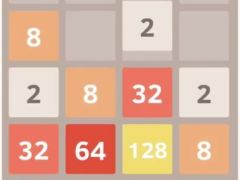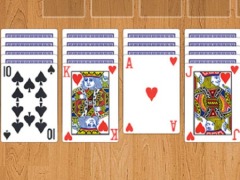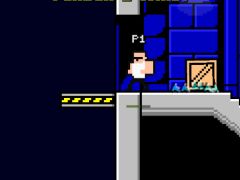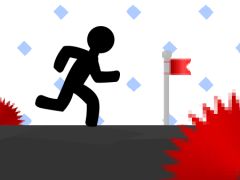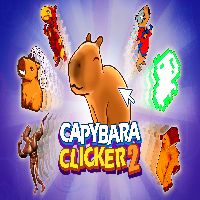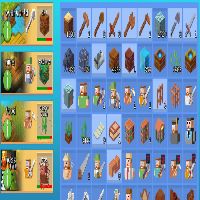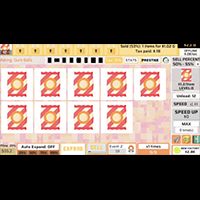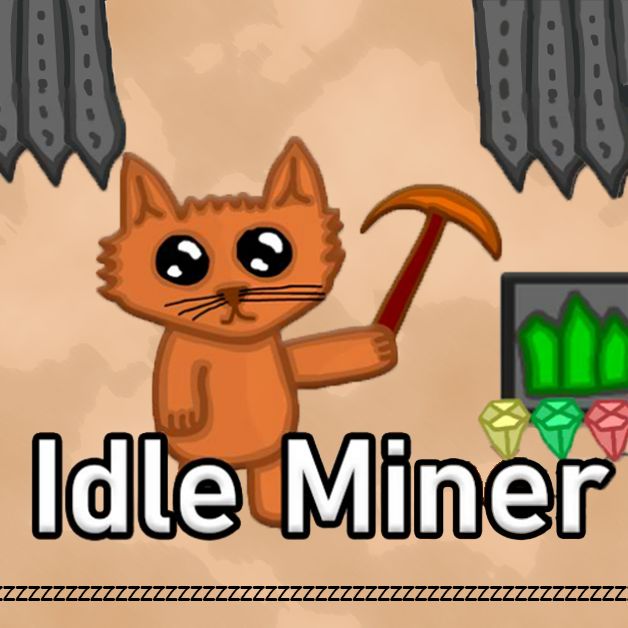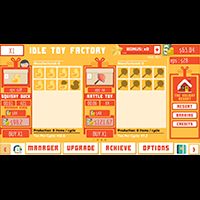HAPPY ROOM
SIMILAR GAMES
Description
Happy Room - Classroom 6X
About Happy Room - Classroom 6X
Welcome to Happy Room - Classroom 6X, a unique and engaging interactive experience that invites players into a simulated environment designed for creative experimentation. Within this virtual laboratory, we are presented with a fascinating opportunity to explore the intricate possibilities of physics and destructive sequences. Our primary role is that of a meticulous planner and implementer, tasked with the deployment of an array of sophisticated and often unconventional tools and mechanisms. These are not for any harmful purpose in the real world, but rather as a fascinating study in cause and effect within a controlled digital space.
The core gameplay revolves around a compelling sandbox, meticulously crafted to offer a diverse palette of dangers and devices. Imagine a meticulously organized workshop, brimming with every conceivable contraption designed to interact with the simulated subjects. Our mission is to understand and harness the power of these elements. We are given a set of unique and often whimsical tools. These range from high-tech instruments like precision lasers and razor-sharp saws to more volatile options such as powerful explosives and reality-bending black holes. The true artistry of Happy Room - Classroom 6X lies in our ability to arrange these devices with strategic precision. We must orchestrate them into the most effective and impactful sequence, observing the results with keen interest.
Each level within Happy Room - Classroom 6X presents specific and often demanding objectives. These goals are not simply about causing destruction for its own sake, but about achieving a particular outcome through a thoughtful application of the available resources. This requires us to delve into the mechanics of the game, experimenting with the placement, timing, and combination of traps. It's a process of discovery, where each trial and error brings us closer to understanding the optimal configuration for success. We are encouraged to think outside the box, to push the boundaries of what seems possible, and to observe the fascinating chain reactions that unfold.
The Sandbox Environment: A Playground of Possibilities
The sandbox environment of Happy Room - Classroom 6X is the heart of its appeal. It provides an unrestricted space where imagination and scientific curiosity can flourish. Unlike games with rigid storylines or predefined paths, this environment empowers us to be the architect of our own experiences. We have at our disposal a vast and ever-expanding arsenal of interactive elements. These are not merely static objects; they are dynamic components that react and interact with each other and with the simulated subjects in complex ways.
Consider the sheer variety: we have devices that manipulate fundamental forces, such as gravity generators that can alter the trajectory of objects, or electromagnetic fields that can attract or repel. There are also more direct methods of interaction, like projectile launchers capable of firing a range of objects, or environmental hazards like pools of acid or extreme temperature zones. The beauty of this sandbox is that it allows for an almost infinite number of permutations. No two players will likely approach a challenge in exactly the same way, and this emergent diversity is a testament to the game's design.
We are not simply placing traps; we are constructing elaborate Rube Goldberg-esque machines of cause and effect. The sequence in which we activate these devices is paramount. A well-timed explosive might propel a subject into the path of a laser, which in turn triggers a chain reaction of falling objects. The environment itself can also be manipulated. We might use tools to alter the terrain, create barriers, or introduce dynamic elements like moving platforms. This level of control and interactivity makes the sandbox a truly engaging space for exploration and problem-solving.
Mastering the Tools: Lasers, Saws, and Beyond
At the forefront of our interactive toolkit are the more visually striking and immediately impactful tools, such as lasers and saws. The lasers in Happy Room - Classroom 6X are not just simple beams of light; they can possess varying intensities, durations, and even colors, each potentially having a different effect. Some might be precise cutting tools, capable of slicing through materials with incredible accuracy, while others could be more destructive, acting like powerful energy weapons. Understanding the nuances of each laser type is crucial for crafting effective sequences.
Similarly, the saws offer a more tangible and visceral form of interaction. Whether they are stationary circular saws, oscillating blades, or even chainsaws, their placement and activation can lead to dramatic outcomes. We can position them to obstruct paths, to cut objects at critical moments, or to directly engage with the test subjects. The way a saw interacts with different simulated materials, or how it can be combined with other forces to increase its cutting power, is a key aspect of the game's physics engine.
Beyond these, the arsenal extends to a multitude of other fascinating devices. Explosives, ranging from small charges to devastating bombs, can be used to clear obstacles, propel objects, or create shockwaves. Black holes offer a unique gravitational manipulation, capable of pulling in nearby objects and subjects, creating opportunities for further interaction or for simply removing elements from play. We also encounter tools that can modify the environment, such as gravity manipulators, teleporters, and even simple but effective items like spikes and falling anvils. The sheer breadth of these tools encourages experimentation. We are constantly learning about their individual properties and how they synergize when used in conjunction. This deep understanding of each tool’s capabilities is what allows us to overcome the increasingly complex challenges presented.
Strategic Deployment: Orchestrating Chaos and Achieving Goals
The essence of success in Happy Room - Classroom 6X lies in strategic deployment. It's not enough to simply place a collection of tools; we must think about the sequence, the timing, and the interplay of forces. Each level presents a puzzle, and our tools are the pieces we must arrange to solve it. This involves a careful consideration of how each element will influence the others. For instance, an explosive placed too early might scatter subjects before a laser has a chance to fire. Conversely, a laser positioned incorrectly might miss its target entirely.
We begin by analyzing the objective. What specific outcome are we trying to achieve? Are we tasked with inflicting a certain amount of damage, reaching a specific threshold of destruction, or perhaps arranging the subjects in a particular configuration? Once we understand the goal, we can then survey the available tools and the environment. We might consider using gravity to position subjects precisely, then employ a series of timed explosions to maximize their impact, followed by a laser to finish the job. The possibilities for combination are vast, and it is our ability to visualize and execute these complex sequences that defines our progress.
The game rewards experimentation and iterative refinement. We might set up an initial sequence, observe the results, and then adjust the placement or timing of certain devices. Perhaps adding a saw to a specific point in the chain reaction will increase the overall effectiveness. Or maybe a strategically placed black hole can pull scattered subjects back into the kill zone. This constant process of testing, observing, and refining is not just part of the gameplay; it's a core learning experience. We develop an intuitive understanding of the game's physics and mechanics, becoming adept at orchestrating controlled chaos to achieve our desired results. The satisfaction comes not just from completing a level, but from the ingenious solutions we devise.
Fulfilling Challenging Objectives: Puzzles of Physics and Destruction
The challenging objectives are what drive the gameplay forward in Happy Room - Classroom 6X. These goals are thoughtfully designed to push our understanding and application of the game's mechanics. They are more than simple targets; they are intricate puzzles that require careful planning and creative problem-solving. Each level presents a unique scenario, often with specific environmental features or starting conditions that influence our approach.
For example, one objective might require us to achieve a certain score by inflicting damage within a time limit. This would necessitate efficient and high-impact trap combinations. Another might ask us to destroy a specific object or group of objects, requiring us to focus our destructive efforts precisely. Some levels might even introduce unique constraints, such as limited tool availability or specific environmental hazards that we must work with or against. The ingenuity of the level design ensures that we are constantly presented with fresh and engaging problems to solve.
The process of fulfilling these objectives often involves a deep dive into the game's physics. We learn how different forces interact: how a blast wave from an explosion can propel a subject into a spinning saw, or how a precisely timed gravitational pull can create a cascade effect. The test subjects themselves behave in predictable yet dynamic ways, responding to impacts, forces, and environmental changes. Understanding these reactions is key to anticipating outcomes and refining our strategies. We learn to predict trajectories, impact points, and the chain reactions that follow, allowing us to fine-tune our deployments for maximum efficiency and to meet the exacting demands of each challenge.
Experimentation and Iteration: The Path to Mastery
At its core, Happy Room - Classroom 6X is a game about experimentation and iteration. The sandbox nature of the environment encourages us to try new things, to explore different combinations of tools, and to observe the outcomes without penalty. This iterative process is where the true learning and enjoyment lie. We are not expected to succeed on the first attempt. Instead, we are invited to explore, to tinker, and to discover the most effective solutions through repeated attempts and adjustments.
When faced with a particularly difficult objective, our first step is often to deploy our chosen tools and observe what happens. We analyze the results, identifying what worked and what didn't. Did the explosion scatter the subjects too widely? Was the laser beam too weak? Was the timing of the saw blade off? Based on these observations, we then make adjustments. Perhaps we reposition the explosive, increase the laser's intensity, or modify the timing of the saw's activation. We might even swap out one tool for another, trying a different approach entirely.
This cycle of experimentation and iteration allows us to gradually refine our strategies. We begin to develop an intuitive understanding of the game's physics and how different elements interact. We learn the strengths and weaknesses of each tool and how they can be best combined to achieve the desired effect. This is not just about brute force; it's about intelligent design. The most satisfying solutions are often those that are the most elegant and efficient, demonstrating a deep understanding of the game's mechanics. Through this continuous process of trying, learning, and adapting, we eventually master the challenges and unlock the full potential of the Happy Room - Classroom 6X experience.
The Educational Value of Virtual Playgrounds
While primarily an entertainment experience, Happy Room - Classroom 6X offers a surprising amount of educational value, albeit in a uniquely engaging format. The game functions as a virtual playground for exploring fundamental principles of physics and engineering in a consequence-free environment. Players are implicitly learning about concepts such as force, motion, gravity, and chain reactions through hands-on experimentation.
The process of setting up traps and observing their effects teaches valuable lessons in cause and effect. Players must think critically about how one action will lead to another, developing an understanding of sequential logic and planning. This mirrors the way engineers and scientists approach problem-solving, by hypothesizing, testing, and refining their designs. The game encourages a trial-and-error methodology, which is a cornerstone of the scientific method. When a particular configuration doesn't achieve the desired outcome, players are prompted to analyze why, leading to deeper comprehension and more innovative solutions on subsequent attempts.
Furthermore, the diverse array of tools available, from lasers and saws to more abstract concepts like black holes, introduces players to a wide spectrum of physical phenomena and their potential applications, albeit in a highly stylized manner. The need to strategically combine these tools to meet specific objectives fosters spatial reasoning and problem-solving skills. Players learn to visualize complex interactions and predict outcomes, developing a keen sense of spatial awareness and mechanical understanding. This makes Happy Room - Classroom 6X a compelling and enjoyable way for individuals to engage with scientific concepts in a playful and interactive manner, fostering curiosity and a deeper appreciation for the mechanics that govern our world.
Unlocking New Possibilities: Advanced Techniques and Strategies
As players progress through Happy Room - Classroom 6X, they will naturally begin to uncover and implement advanced techniques and strategies. What might initially seem like simple destruction quickly evolves into intricate choreography of physics and timing. Mastering the game involves moving beyond basic trap placement to understanding how to synergize multiple elements for maximum impact and efficiency.
One such advanced technique involves utilizing environmental features in conjunction with deployed traps. For instance, understanding how a bouncing projectile might be redirected by angled surfaces, or how a released object might gain momentum from a ramp, can be crucial for hitting targets that are otherwise out of reach. Similarly, leveraging the simulated physics of the environment, such as air resistance or the properties of different materials, can unlock more complex and effective solutions.
Another key to advanced play is mastering the timing of sequential activations. The order in which traps are triggered can dramatically alter the outcome. A strategically placed explosive might not just cause damage, but also propel a test subject into the path of a waiting laser or a crushing press. Learning to create these precise temporal sequences requires careful planning and often repeated attempts, refining the intervals between activations until the perfect chain reaction is achieved. Furthermore, players may discover how to "chain" effects, where the result of one trap directly sets up the conditions for another. For example, a gravity anomaly could be used to gather multiple subjects, making them vulnerable to a single, more potent area-of-effect trap. The exploration of these nuanced interactions and sophisticated combinations is what elevates the gameplay from simple engagement to a true test of strategic thinking and creative problem-solving.
The Appeal of the Simulated Laboratory
The enduring appeal of the simulated laboratory setting in Happy Room - Classroom 6X lies in its inherent promise of exploration and controlled chaos. It provides a unique space where the usual constraints of reality are lifted, allowing players to experiment with forces and phenomena that would be impossible or dangerous to replicate in the real world. This freedom to manipulate and observe is a powerful draw for many players.
Within this digital realm, players are empowered to be creators and experimenters. They can construct elaborate contraptions, test the limits of physics, and witness the fascinating consequences of their designs. The sandbox nature of the environment fosters a sense of agency and creativity, allowing individuals to express themselves through their strategic choices and problem-solving approaches. Each level becomes an opportunity to build something unique, a custom-designed sequence of events tailored to achieve a specific outcome.
Moreover, the virtual laboratory offers a safe space for curiosity to flourish. Players can indulge their "what if" questions without any real-world repercussions. What happens if a black hole is placed next to a series of lasers? How does a powerful explosion interact with a fragile structure? The game provides immediate and often spectacular answers to these questions, satisfying a natural human desire to understand how things work and to push boundaries. This combination of creative freedom, empirical exploration, and the satisfaction of solving complex puzzles within a compelling virtual setting makes the simulated laboratory of Happy Room - Classroom 6X a highly engaging and rewarding experience for a wide range of players.
Happy Room sets you in a virtual laboratory where you are tasked with testing out various weapons and traps on clone test subjects. The game provides a sandbox environment filled with all manner of dangerous and bizarre contraptions. From lasers and saws to explosives and black holes, you arrange these devices strategically to create the most effective sequence to damage the clones. The objective is to fulfill the challenging goals set for each level, which often require you to experiment with the placement and combination of traps.
Strategy and Destruction
Each level in Happy Room offers a different set of objectives and budgets, pushing you to think creatively to maximize your damage output within the constraints. You’ll unlock more destructive devices as you progress, allowing for even more elaborate and chaotic setups. The game encourages you to revisit levels with your newly acquired arsenal to achieve better efficiency and higher scores. The physics-based reactions of the traps and clones add a layer of unpredictability, making each session uniquely destructive. Engage in this macabre yet oddly satisfying scientific endeavor to discover just how damaging your contraptions can be.
